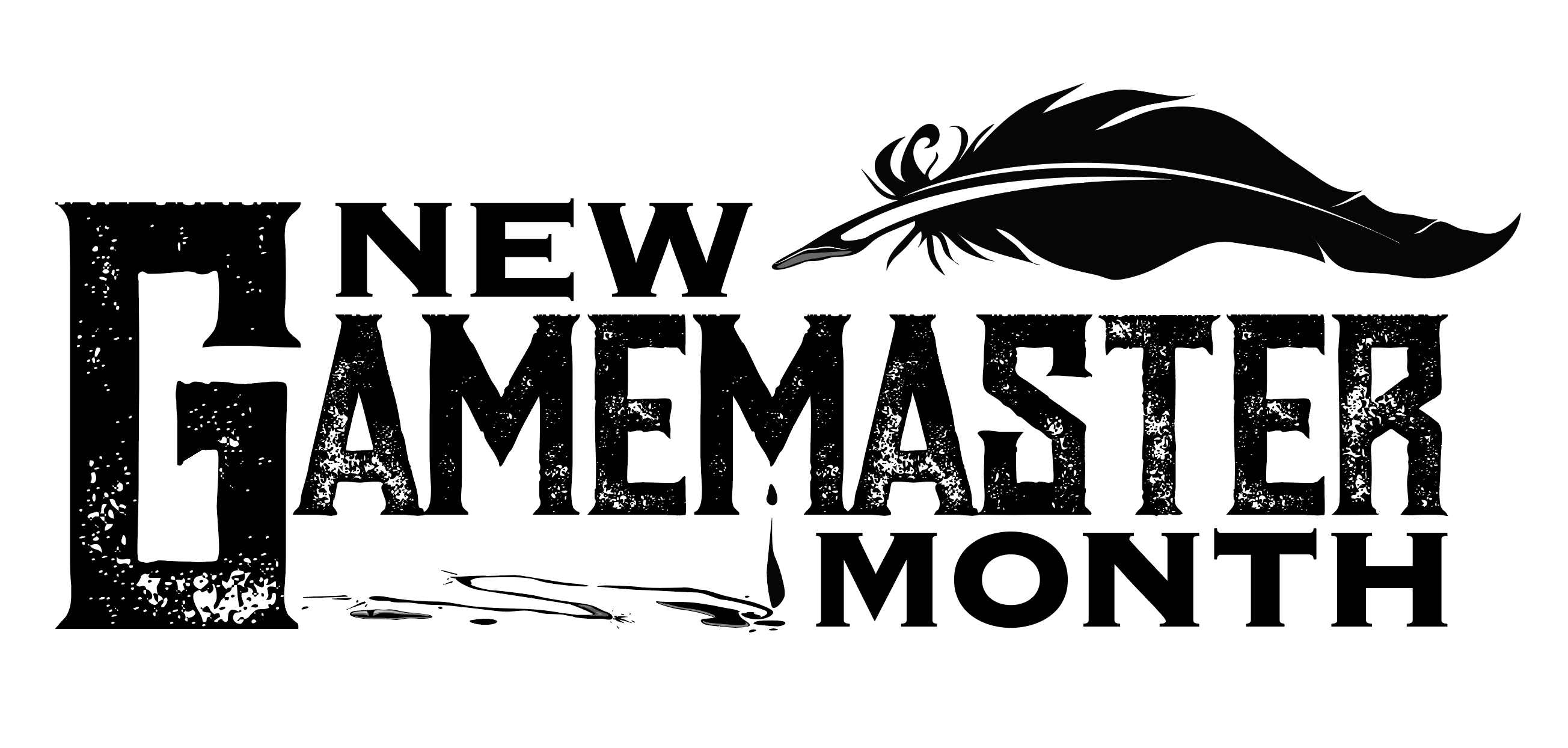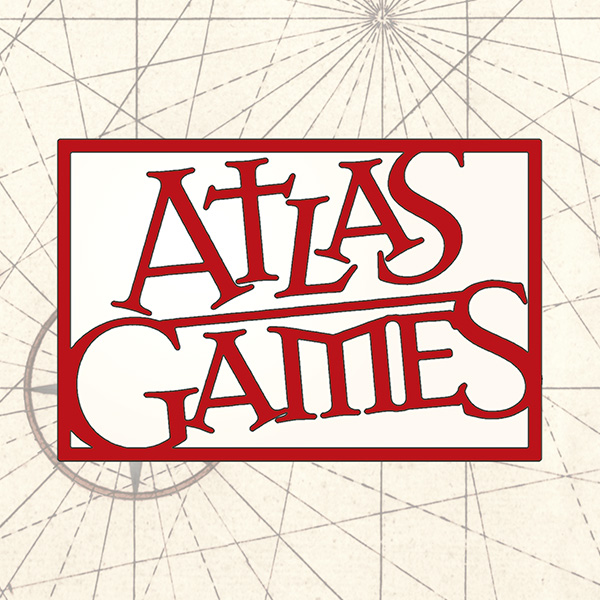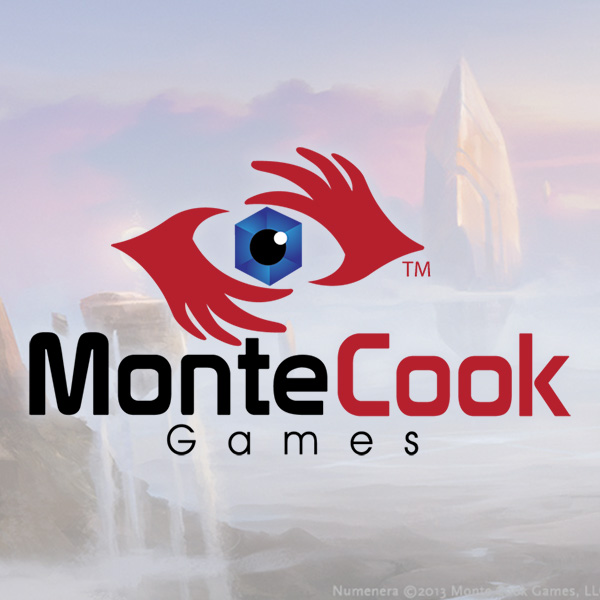This is it: The final session of the New Gamemaster Month program! We’ve come a long way over the past few weeks, and we’re closing in on your first game session.

In New Gamemaster Month we’ve been helping players who feel the urge to run an RPG—to become a GM for the first time—take the plunge. If you’re just joining us, start with the first installment. This is the final post, but you can catch up—and be a GM too!
In this, our last part of the 2024 New Gamemaster Month program, let’s talk not about GMing, but about characters. Why? Because your first act as GM will be to shepherd your players through the process of creating their characters—a process that’s likely to take up a portion of your first session.
If your players are seasoned veterans of your game of choice, they’ll be familiar with both the process of making characters and the types of PCs that adventure in that setting. If some or all of your players are new to the game, though, they’ll have questions. And they’ll look to you for guidance. You don’t have to be an expert on the game’s characters, but you need to be sufficiently conversant to be helpful to your players and keep the process moving along.
Choosing Characters
What kind of characters should your players make? That’s up to them. But it’s a good idea to have a variety of character concepts in your group. This is true for a couple of reasons. First, having a variety of strengths helps players successfully face a variety of challenges (or gives them options on how to approach challenges). This is practically codified in some RPGs—the classic dungeon-delving group includes a fighter, wizard, rogue, and cleric because you really need all those abilities to survive the dungeon. Many games are a bit looser, though, so it may be no crisis if your party is heavy on fighting types (for example) and light on talkers or magicians.
The other reason is you want to let each player have moments to shine. Imagine you’re playing a spy game, and the adventure involves stealthing into a high-security facility, a high-speed chase in a getaway car, and then a showdown with the thugs the opponents send after you. The character who’s great at defeating electronics gets a moment in the sun as you infiltrate the facility; the character who’s great with vehicles shines during the chase; and tough special-ops soldier type shines in the fight scene. Everyone has a moment in which his or her character feels crucial. If they were all sneaky types, nobody really gets the spotlight in that first scene (or any of them, frankly) and you might struggle just to make it through those other scenes.
Introducing Characters
One particular issue you’ll have in your first session is bringing the characters together. Sometimes this process can seem contrived or stilted (the stereotype in fantasy games is that the players all happen to be at a tavern when someone with an adventure wanders in). If you have a better idea, or if your adventure sets up a good introduction, great. If not, don’t sweat it. Your game will ultimately be about what the characters do once things get rolling, not about how they met.
Allowing Adjustments
One last thing on the subject of characters: Often, players don’t know exactly what they want when they sit down at the gaming table. Sometimes once the game starts, a player finds that they don’t really like the way their character works, or that it’s not really what they had in mind. And sometimes a group dynamic emerges for which the characters, as generated, aren’t a perfect fit.
You know what? That’s natural. It’s usually all right to let your players make adjustments to their characters after the first session. Just like a TV show that changes up a bunch of stuff after the pilot (ever watch the early episodes of the original Star Trek?), you’ll find that even if it seems odd at first, it makes little difference in the long run. And your game will be more successful if the players really love their characters.
Running Your First Game Virtually
At this point, you’re just about set!
Make sure you know how to invite players, so you can do so when game time rolls around—nobody likes spending the first 20 minutes of a session trying to get everyone into the game. If you’re going to play on a VTT, you’ll probably need their user names, or the email addresses associated with their accounts, to issue invitations. You’ll need their user names for a platform like Skype, or an email address to send a Zoom link.
Make sure you have these items, and you’re good to go. Have a great game!
There’s a lot of material in the character creation section of Numenera Discovery. Don’t panic: You don’t have to read too much of it. For the most part, it’s detailed information on the various abilities players might choose as they create or advance their characters, the bulk of which isn’t relevant now. What you do want do to, though, is familiarize yourself with the character types, the function of descriptors and foci, and the general character generation process.
Read these sections:
- Chapter 3: Pages 22-27 (That’s the whole chapter—but it’s short.)
- Chapter 4: Pages 28-29 (Stop when you get to the Glaive Background header.)
- Chapter 4: Pages 36-37 (Start at the Nano header and stop when you get to the Nano Background header.)
- Chapter 4: Pages 44-45 (Start at the Jack header and stop when you get to the Jack Background header.)
- Chapter 5: Page 53 (Just read down to the Charming header, but then scan a few descriptors throughout the chapter to get a sense of what they’re like.)
- Chapter 6: Page 58 (Just read down to the Bears a Halo of Fire header, but then scan a few foci throughout the chapter to get a sense of what they’re like.)
- Character Creation Walkthrough: Page 406-407 (This summarizes the process you’re going to lead the players through as they create their characters.)
In addition to this reading, you’ll also want to lay in some drinks and snacks if you didn’t do so as part of Monday’s activity.
Regarding getting the characters together, Numenera has a nifty mechanism to help you out with this: Each character comes with a built-in hook that connects him or her to another character, and several options for a connection to the first adventure. The link to the adventure is part of the character’s descriptor, and the connection to another character comes from their focus. In both cases, the players have some leeway in how to interpret these connections. In your first session, after you make characters, spend five minutes or so discussing these connections and how they relate to the PCs’ shin obligations, and you’ll find they really help players get into their characters quickly.
You’re Ready to Go!
Relax. It’s going to be a lot of fun. You’ve done a lot to get yourself up to speed, and you’re ready. Check it out:
- You have the rules and an adventure.
- You’ve read through the adventure, much of it more than once. You’ve given some thought to the encounters—enough to bring them to life, but not too much, because that tends to presuppose too much.
- You set up the time and place, and your players are ready to go. You have a sense of what they expect or will enjoy.
- You’re familiar with the general rules. It sometimes feels like you’re not familiar enough, but trust me, that’s natural. You and your players will do fine, and you’ll gain confidence as you go.
- You watched the How to Play Numenera video, so you’ve seen the game in action.
- You’ve read up on character generation.
- You’ve gathered up all the stuff you need.
- And most of all, you know that you don’t have to be the ultimate expert on the game’s rules or setting. You’re ready to be creative, to work your way through any pitfalls that arise in play, and to be spontaneous. You have what you need, and you have what it takes.
That’s it: That’s all the secret ingredients. You are ready. Go run your game!
Aaaand Step Nine. And Ten.
What? More steps? Didn’t we just get to “Go run your game?”
Yep, but your first session isn’t the entirety of your GMing career. You’re going to have a great time, and chances are you’re going to run a lot more than Taker of Sorrow over the weeks, months, and years to come. (In fact, it contains a great hook into another adventure: Vault of Reflections) And even if you don’t, Taker of Sorrow alone may well run through more than one session.
So, here are some things to do after your first session:
- Talk to your players about the time and place for your second session. (You might want to do that before you part ways after the first session.)
- Spend a few minutes thinking about how things played out, and how this session’s events affect the rest of the adventure.
- Review upcoming encounters, just like you reviewed the adventure’s early encounters in Step Six.
- Think about what might happen after this adventure concludes. Will you keep playing? If so, what will the next adventure be? There are several more in Numenera Discovery, along with Numenera Destiny, The Devil’s Spine, Weird Discoveries, and several of our short, PDF-only products. And, of course, you can always make your own!
And, finally:
- If you’ve run your first game session, tell us about it! You’ve “won” New Gamemaster Month, and we really, really want to hear how it went. Hit us on the New Gamemaster Month Facebook group.
- And check back here next week. We’ll do a followup post that sums up how things went for many of you, and talks about how you can apply what you’ve learned to future games you run—not just Numenera, but other game systems as well.
The first game session for Unknown Armies is important. Not only will you set the group’s objective and path, you’ll be working together to create the players’ characters. Don’t worry, the players will be doing most of that work. You’re really there to help keep things moving along, and to enjoy watching the players get creative.
Character creation rules can be found in Book Two: Run on pages 24-33. Although the players will be doing most of the work, you’ll be their guide. Read through these pages to get an idea of what to expect. You’ll also need blank character sheets, notecards, paper, and something to act like a corkboard. An actual corkboard is great, but you could use a virtual one, a dry-erase board, or a big piece of paper.
Start by collaboratively making an objective and path as discussed in Step 4 of the New Gamemaster Month content. Then follow the character creation guide in Book Two: Run. As players notch their shock gauges and set their identities, be available to answer questions they might have about the rules and setting. Overall, your role here is more coach than teacher. Let the players make the characters they want to play.
Players will also be creating elements of your setting, such as locations and gamemaster characters (GMCs). That means you should be ready to write these details down. As you create encounters for your game sessions (obstacles, distractions, or blowbacks), you’ll refer to these elements for help. For example, a mentor GMC created during this process is great to bring back as a distraction later on.
Summary Of Your First Game Session
Here’s a brief recap of what should happen during the first time you sit down with the players.
- Discuss how Unknown Armies is a game about mystery, horror, and obsession.
- Explain that the characters will be broken people trying to save the world — or at least their corner of it.
- Work together to create an objective, path, and some milestones for the cabal.
- Let players create their characters, stepping in to explain things as necessary.
- Talk about any trigger warnings and what players might want to see in the game.
There you go — you are ready to run Unknown Armies! Be sure to check the New Gamemaster Month Facebook group if you have any questions, or to get inspiration. And when you’re finished with that first session, post your experiences and thoughts to inspire other people to become a GM for the first time!
All the character creation rules are in the Trail of Cthulhu rulebook, on pages 9 to 48.
The players don’t need to read these rules in detail – just be on hand to explain anything that isn’t obvious. Common questions include:
- How many points do I put into an Investigative Ability? One point means you’re trained or talented in that field; 2 means you’re both; 3 or more means you’re an expert. You don’t really need to have a rating of more than 3 in anything (Credit Rating is an exception; it’s determined by your Occupation).
- What Investigative Abilities do I need? Between you and the other players, try to cover every ability. Co-ordinate with the other players – ask “Who’s going to take Evidence Collection? Who’s covering History?”
- If I spend all the points from an Investigative Ability, how do I get clues? You still get core clues, even if you’ve spent all the points from a particular ability. As long as you have a rating in an ability, you can use it for finding core clues.
- How many points do I put into a General Ability? As a rule of thumb, 8 or more indicates an area you’ve specialized in. Remember, most tests have a Difficulty of 4, so think of it as 3 points = 1 success. If you want to be able to almost certainly succeed at hiding twice, put 6 points into Stealth, and so on.
- What’s this Cthulhu Mythos ability? You can’t put points into this ability during character creation.
- What about equipment and weapons? You’re assumed to have basic equipment with you, based on your Occupation and abilities. If you’re a doctor, you’ve got medical supplies. If you’ve got a high Firearms score, you’ve got a handgun. For everything else, use Preparedness.
In addition to this reading, you’ll also want to lay in some drinks and snacks if you didn’t do so as part of Monday’s activity.
The RuneQuest corebook contains the full means of creating adventurer characters, but for the purposes of the Starter Set, all that work has already been done in the form of pregenerated adventurers. The Starter Set has fourteen of these adventurers, which should handle all manner of tastes. You can download them here.
You can run a game successfully with only two players, or even just one, but it’s a bit more difficult. And with more than six it can be very challenging to keep everyone engaged. (And sometimes just to fit them around the gaming table!)
These folios have enough information to let the players play without much use of the Rules book, but you as gamemaster should be comfortable enough with the core concepts to answer any questions about the sorts of activities that can happen in a game session, from movement, time, skill use, combat, damage, augmenting, and more. So, take a look at one or more of the folios, and take note of anything that doesn’t seem clear to you.
If you’re wondering which of the fourteen are the “best” choices, you might go with Vasana (heavy calvary warrior), Harmast (noble warrior), Yanioth (Earth priestess), Vostor (heavy infantry warrior), Sorala (scholar-adventurer, like Indiana Jones!), and Nathem (a hunter with a cool shadowcat companion).
While all the created adventurers offer something interesting to the experience, you might find that some offer more challenge that you might not want to deal with for your first time running the game, such as Vishi Dunn’s interaction with the Spirit World and his intelligent sidekick, Dazarim and Ionara’s “fish out of water” aspect (they’re a long way from home), or Makarios’ pacifism (he’s a healer, sworn not to harm living beings). They definitely fit in Glorantha but you might want to keep things simple to start with.
These folios are what your players will be looking at, and it’s best to know exactly what the adventurers on them can do. By reviewing them, you can tell the players how to find information on their adventurer sheets, and what options adventurers have when they’re presented with a challenge, a conflict, or opportunities to explore. One thing about RuneQuest to keep in mind is that most of what players can have their adventurers do is on their character sheets.
It’s worth mentioning that the greatest resource you have are the players themselves. Pay close attention to what questions they ask and feed them enough info to keep them interested and engaged. Don’t be afraid to make changes to the adventure based on their investigation, and even let them suggest background elements if they’re not too outlandish.
You’re Ready to Go!
Relax. It’s going to be a lot of fun. You’ve done a lot to get yourself up to speed, and you’re ready. Check it out:
- You have the rules and an adventure.
- You’ve read through the adventure, some parts of it more than once. You’ve given some thought to the encounters—enough to bring them to life, but not too much, because that tends to presuppose too much.
- You set up the time and place, and your players are ready to go. You have a sense of what they expect or will enjoy.
- You’re familiar with the general rules. It sometimes feels like you’re not familiar enough, but trust me, that’s natural. You and your players will do fine, and you’ll gain confidence as you go.
- You’re familiar with the adventurers and their abilities.
- You’ve gathered up all the stuff you need.
- And most of all, you’re confident. (Right?) You know that you don’t have to be the ultimate expert on the game’s rules or setting. You’re ready to be creative, to work your way through any pitfalls that arise in play, and to be spontaneous. You have what you need, and you have what it takes.
That’s it: That’s all the secret ingredients. You are ready. Go run your game!
Aaaand Step Nine. And Ten.
What? More steps? Didn’t we just get to “Go run your game?”
Yep, but your first session isn’t the entirety of your gamemastering career. You’re going to have a great time, and chances are you’re going to run a lot more than “The Broken Tower” over the weeks, months, and years to come. And even if you don’t, that adventure alone may well run through more than one session.
So, here are some things to do after your first session:
- Talk to your players about the time and place for your second session. (You might want to do that before you part ways after the first session.)
- Spend a few minutes thinking about how things played out, and how this session’s events affect the rest of the adventure.
- Review upcoming encounters, just like you reviewed the adventure’s early encounters in Step Six.
- Think about what might happen after this adventure concludes. Will you keep playing? If so, what will the next adventure be? There’s a free Quickstart adventure here with some familiar faces and a slightly older version of the rules. Additionally, there are several more adventures in the RuneQuest Gamemaster’s Screen Pack and other adventure collections such as The Smoking Ruin & Other Stories and The Pegasus Plateau & Other Stories, all of which are available at the same places as the Starter Set. And, of course, you can always make your own!
And, finally:
- If you’ve run your first game session, tell us about it! You’ve “won” New Gamemaster Month, and we really, really want to hear how it went. Hit us on the New Gamemaster Month Facebook group.
- And check back here next week. We’ll do a follow-up post that sums up how things went for many of you and talks about how you can apply what you’ve learned to future games you run—not just RuneQuest, but other game systems as well.
And a hearty welcome to the fellowship of Glorantha and RuneQuest fans and players, an international group of passionate enthusiasts and newcomers that have kept the game and its setting (sometimes independently of one another) alive and thriving for decades.
There are Facebook groups for RuneQuest, Glorantha, and Chaosium, and the Basic Roleplaying site (www.basicroleplaying.com) is the official home for discussion of RuneQuest, Glorantha, and many other associated games.
Open your first session with a discussion of safety and consent (see post No. 2 in this series). Take a moment to nail down the team concept—the reason the Hunters work together. A quick way to do this is to draw inspiration from pop culture:
- Slayer and Entourage (Buffy the Vampire Slayer, Dresden Files books, Grimm)
- The Unexplained Cases Team (X Files, Primeval, Warehouse 13, Fringe, BPRD, Angel)
- The Order (The Librarians, Twenty Palaces books)
- Road-Tripping Hunter Family (Supernatural, Scooby Doo)
Have players look at the playbooks and make their picks. (Keep in mind, only one hunter of each type is allowed in a game at the same time.) Follow the instructions in each playbook to create the Hunters. If people seem to be getting bogged down in the choices, have them choose whatever seems coolest for now. They can always revise things after you play out the first session.
Once everyone’s ready, let each player introduce their Hunter: their name, playbook, looks, what they can do, etc.
Then it’s time for one of the most fun bits of the first session: go around the group and have each player establish their hunter’s history with the other hunters by picking one of the shared events or relationships from the list in their playbook. Help with suggestions if anyone has trouble coming up with something, and make sure everyone’s cool with the implications of these answers as suggestions get floated. This is the point at which the world of the game really leaves the Keeper’s hands and the players start to get involved.
The team’s story will likely arise from these relationships, so everyone has a basic idea of how the hunters got to know each other and started hunting monsters together. Given that the events of their backstory and relationships are fresh information, it sometimes helps to put together a rough chronology of what happened when.
If you want to cover the basics of playing the game, explain the player agenda (page 96), basic moves (page 101), what to roll and add (page 99), using Luck (page 113), when to mark experience (page 118), and how to level up (page 118). But don’t worry about drilling into the details of every single rule. The Powered by the Apocalypse system is lightweight and easy to understand. You can always cover the specifics as they pop up.
One final thing: check if anyone has a start-of-mystery move: the Chosen always does (“Destiny’s Plaything”), and an Expert, Flake, Initiate, or Spooky might have one. These moves often give players enigmatic hints or extra bits of information before the investigation begins in earnest. Ask them how they do the move, then have them roll and see what the effect is.
Begin the game with a teaser, a scene to introduce the hook to the mystery. In “Dream Away the Time” our mystery begins with a series of recent strange weather events, attacks on townspeople, and other unusual occurrences. You can narrate this and open with the hunters arriving in town (or meeting up if their team concept means they are locals.)
The investigation begins!
There’s no single best recommendation on where your party should start investigating or how to do it. For some groups the strange weather will be the hook. For others, concerns about the townspeople may spark their curiosity. Monster of the Week is an improvisational game in which you create a story together. That story emerges from a conversation between you and your players. Typically it falls on you to start that conversation.
Describe an initial situation. Try to include a detail that might appeal to the players’ curiosity or plays on elements from the hunters’ backstories and relationships. You don’t have to have a complete ready-made solution in mind for how to “fix” the situation—it’s often better if you don’t! Just give the players something unusual to act on, even if it seems small or minor.. Don’t worry about having the best idea, you just need a thought-provoking detail. Give them that, and they in turn will describe how their hunters respond. Give them another bit of intriguing detail in response to their actions and they’ll act on that again. Now you’re all engaged in the conversation, going back-and-forth and discovering the twisting bits of the mystery together. Each decision the hunters make leads to a new situation, requiring new decisions about what happens next.
The key is that the conversation keeps flowing. Be careful about saying “You don’t know” or “Nothing happens” as the investigation unfolds. Those phrases tend to stop the cycle of play. It’s better to give up some minor detail or a “wrong” answer than to block the players’ investigation by saying “you don’t know anything about that” or “that doesn’t do anything.” It’s somewhat paradoxical but the fun of a mystery is discovering things, not failing to discover things.
When in doubt about what to do next, refer to your Keeper agenda and principles. Ask lots of questions, and give your hunters opportunities to do cool things. Don’t be too precious about your role—oftentimes players will have better ideas than you do! Incorporating their theories into the mystery or adapting parts of what they suggest and then giving it a slight twist is a great way to keep them engaged and curious.
Above all, have fun—let the hunters run with the mystery, find ways to make the cool things they do extra cool, prompt them with questions when they stall, and show them the consequences (both good and bad) of their intervention in the monster’s plans. Be a fan of the players and they will be a fan of your game.
You got this.
Sections to Read & Review: The Hunters (pages 17-27); The Playbooks (pages 29-91); Get Ready for Action (pages 93-125); The First Session (pages 163-171); One-Shot Games (pages 292-293).
If You’re Using Roll20
Players roll for each move by clicking the two-dice symbol (red 6 and white 1) at the end of the move description in their character sheet, either from the basic moves in the Hunter Moves Reference near the top or in the Moves section of the playbook. The roll result will appear in the chat window.
The share button next to the dice roll button in playbook moves sends the full text of the move to the chat window for easy reference. No more “What does your move do again?”
Our Roll20 Marketplace modules for Monster of the Week come with templates for creating history maps between 3, 4, or 5 hunters. Simply edit the sample text and replace it with your own.
This is the last time we’ll speak. Let’s go over the plan once more. After this, you’re on your own.
Earlier, we got the equipment in order.
- Primary Objective: Assemble the materials required to run your game
- Secondary Objective: Review previous weeks’ entries, the scenario, and your notes
Now let’s cover what to do when the Agents show up.
Remind everyone to maintain the mood.
Gaming is fun. Being with friends is fun. Telling a good story is fun. Playing the Delta Green game is huge fun. Why? Because being an Agent of the organization Delta Green is decidedly NOT. It’s terrifying and deadly. The Agents make decisions in a bleak, dangerous, doomed world, putting their souls and lives at hazard for an uncertain purpose. The story improves immensely if everyone agrees to preserve the mood. See “How to Be a Player” on page 7 of Need to Know for pointers. Most Delta Green games are filled with rueful laughs around the table. Don’t let that get in the way of a shared experience of the Agents’ fears.
Start playing.
“Last Things Last” is short enough that a group can easily get through it in a single session of two to four hours. You’ve done the prep. Now finish the job. Don’t explain more rules if you can possibly avoid it. Just tell players to describe what their characters try to do. If it requires a roll, walk them through how to do that. Dive right in and keep the pressure up. There’s no time to waste.
Delta Green will have more assignments for anyone that makes it back. The survival of the species is on the line.There’s always more work to do.
Actionables
- Primary Objective A: Remind everyone to maintain the mood of Delta Green.
- Primary Objective B: Begin the operation.
You can do this.
He makes it sound easy, doesn’t he? Somebody’s got to put more meat in the grinder. You hear it yet? The gears turning, hungry for you?
I’ll train you up. I’ll do it right. Unlike that prick. Here’s the only thing you need to know to be a Handler. The Golden Rule. You ready for it?
The rules are gonna fail you. They always fail you. Learn ’em all you want. They’ll still let you down. They’ll leave questions in the air, thick enough you think you can see ’em. Pretty soon you’ll think you can see a lot of shit swirling in the air, irrupting through holes in reality with the mindless whims of Azathoth.
What do you do when the rules leave questions? How do you handle it? Where does the plot go in the quantum tumble? Left or right? Particle or wave? Is the cat dead or alive or something worse? The only rule is that rules are gonna fail, so what do you do?
You do what reality does. You make it worse. You make it more terrifying. You let it turn into something more awful.
That’s it. Entropy is the only answer. Don’t know what to do? Make it worse. If it’s good enough for God, who the hell are you to judge?
If the Agents don’t know what’s happening, it’s getting worse. That’s always the answer because that’s the world where we live and die.
There. You know the golden rule. I dub thee Handler. Go forth and serve.
The other guy was right about one thing. If you’re lucky, we’ll never meet again.
It’s time to invite your players!
From the game management page, you can invite players to your game via email address (this should be the same email address they use for their Roll20 account). You can also share via the link found in the chat box when you first open the game. You’ll need to hover over the box to reveal the link—this is to protect you in case you are streaming.
If you want to find new players for your game, we are here to help! You can use our Looking for Group system to easily invite players to your game.
Throughout this program, we have expert GMs on hand to answer questions and provide general support at the New Gamemaster Month Discord Server or the New Gamemaster Month Facebook group. Please drop in, join the group, introduce yourself, and ask any questions you might have. Other new GMs will also be there—it’s a great place to share your experiences and support one another. Hope to see you there!






